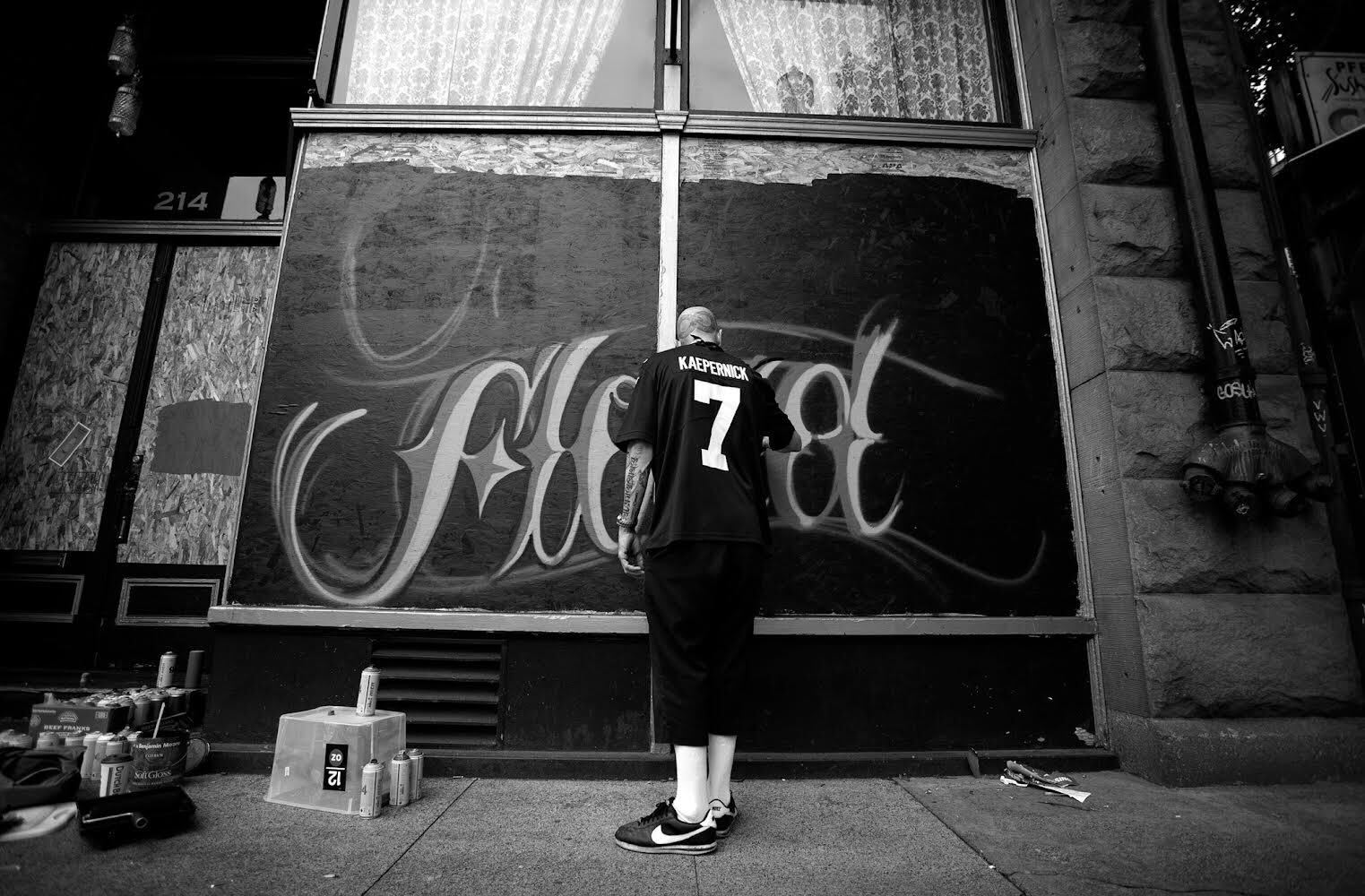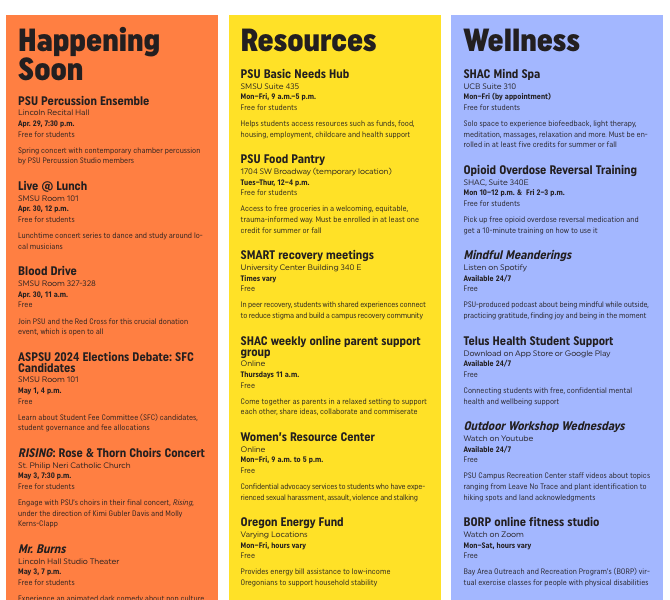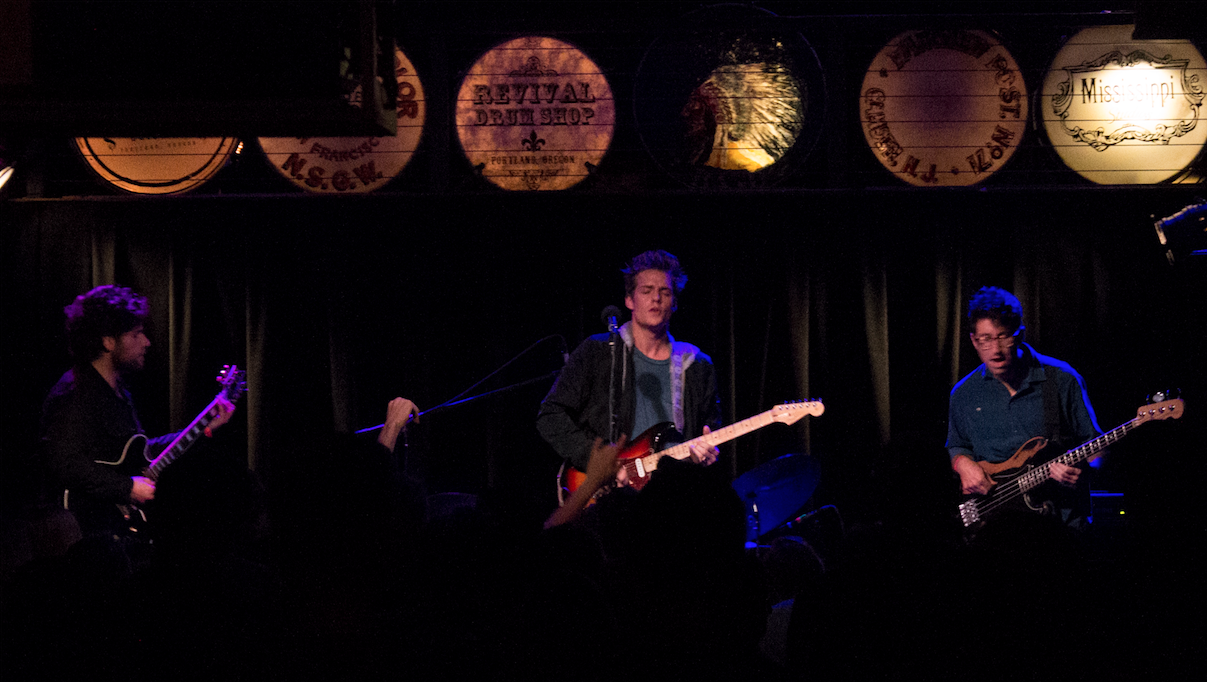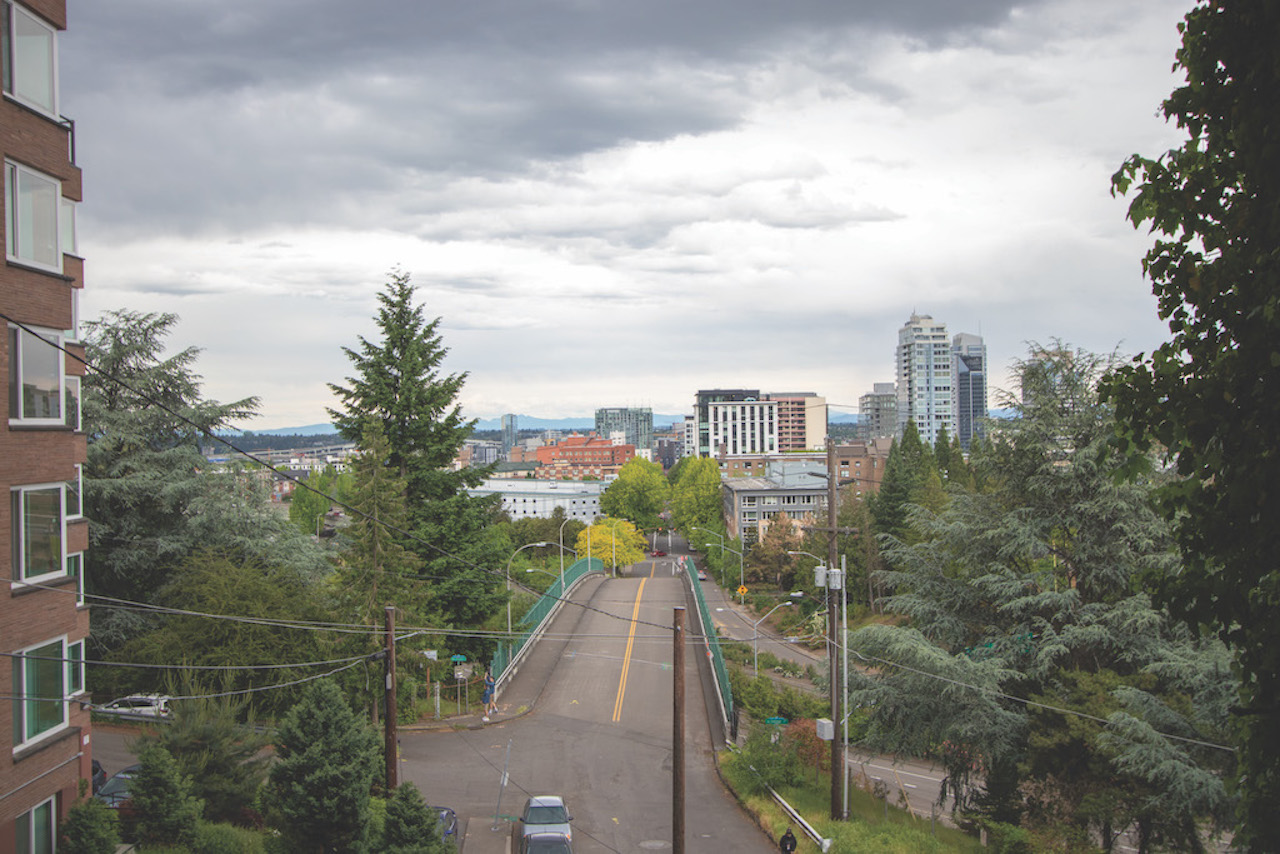The status of street art is a contentious issue. For some, it is not so much art as merely gratuitous graffiti. For others, it can be a source of civic pride, public artistry and community engagement in cities across the country.
In Portland, creative expression is everywhere, literally written on the walls. Whether it be a word, a random name, a cryptic message, a vibrant mural, a crude drawing or a powerful political statement, Portland’s city walls reflect a cacophony of different voices within local society.
However, discerning graffiti from public art proves a rather subjective task. “To me… [graffiti] is actual vandalism; it’s not sponsored, it’s not allowed, it’s not sanctioned,” said Portland-based visual artist, Slang. “Street art—that term—used to be more definitive, and I feel like it has become more loosely defined… It’s become generic, but it used to have a substantial meaning.”
Slang points to art dealer and curator Jeffrey Deitch as a primary actor in blurring the line between the substance of real art and graffiti art. “He [Deitch] got hired to work at the [Los Angeles Museum of Contemporary Art (MOCA)] and did a show called Art in the Streets,” Slang said.
The show was based on “the graffiti styles that emerged from American housing projects, subway yards, and bleak suburban parking lots during the 1970s.” This gallery ended up being one of MOCA’s most popular shows. Despite its success, “The board just all protested, ‘This isn’t art!’” Slang said. “That’s the problem with old mentalities getting in the way of everything.”
In academia, the artistic canon is well defined and well taught. Slang described their time in art school as having been skewed by a “weird insecurity of holding on to the indoctrination of what art is,” Slang said.
Scholarly artistic communities deem specific genres of work more worthy of recognition than others, yet even institutional definitions of good art have changed dramatically with time. “They were teaching me how to be a successful artist, but [a successful artist] 30 years ago,” Slang said.
“Art in itself is so subjective,” said Sid Spencer, an art curator at Art Design Exchange (ADX), a community event and art gallery space in Portland. “It’s not black and white. There’s a gray area.”
ADX recently hosted a public event called The Rattle Can Revival, which showcased the work of different street artists, graffiti artists and muralists. A long table displayed repurposed spray cans elaborately decorated in different themes. Peculiar sculptures made of found materials and beautiful paintings incorporating common techniques in graffiti decorated the gallery.
“Street art and graffiti are evidence of humanity or evidence of our presence here,” Spencer said. “When I lived in Washington D.C., there wasn’t nearly as much street art as there is in Portland.” It’s difficult to imagine walking through the streets of Portland without the presence of street art and graffiti. It’s become a part of the urban landscape.
Finn Graves was one of the artists whose work was on display at ADX. One of her paintings, “Tulip Dreamers,” depicts a white tulip drenched in green and orange spray paint in a recklessly impactful juxtaposition.
Graves’ art practice is guided by the idea of transformation. “It’s all about transformation,” they said. “‘What can I take away from this? What can I create out of nothing?’” Graffiti, street art, vandalism—however we define those terms—are acts of transformation in themselves.
For Graves, the only difference between graffiti and public art is that “one artist is being paid, and one isn’t,” they said. “Everybody has their own definition of what art is.”
The city of Portland, however, has no issue imposing a rigid definition of graffiti. “Any unauthorized markings of paint, ink, chalk, dye or other similar substance which is visible from premises open to the public and that have been placed upon any real or personal property,” according to City Code Chapter 14B.80.
In Portland, graffiti is considered criminal mischief. At the lowest level, it is a Class-C misdemeanor punishable by up to 30 days in jail and fines reaching $1,250.
For many Portlanders, this criminalization of graffiti artists merely perpetuates a harmful system. “They want to keep us locked up and incarcerated,” Slang said. “It’s a multibillion dollar industry.” The prison industrial complex is something that Slang passionately criticizes, and this criticism is often reflected in Slang’s own art.
“They don’t want to lose their stock, so they’re going to keep this system going,” Slang said. “You’re locking up kids and young people in a violent system. You’re creating violent people. That’s the cycle of violence. We’ve done that, and it doesn’t work.”
Slang works as a volunteer for P:ear, a non-profit organization that supports Portland youth experiencing houselessness. “P:ear creates a safe space,” Slang said. “They’re an example of what transformative justice actually is. When there is a dispute or a conflict between two kids, there’s no punitive action taken… That’s a really good framework of [what] we as a society need to do instead of punitive measures. We need to start working with the cause, not the symptom of something.”
According to Slang, what helps youth the most is “just talking and genuine affirmation.” they said. “That goes a really fucking long way. You don’t have to do much other than just genuine encouragement… Even the smallest amount of affirmation—I see it light the fire in these kids. They are some of the most inspirational people I’ve ever met.”
One way that Slang and P:ear support Portland youth is by leading mural projects across the city. P:ear prioritizes the importance of art in building strong community ties and offering an outlet for self-expression.
Slang discussed their personal experiences with racism, as well as a disillusionment with the United States capitalist system that only made them feel more out of place as they’ve grown up.“I feel like my story is a perfect example,” they said. “I didn’t have anywhere else to direct my energy and rage over these things.”
“[Creating art is] just very cathartic and therapeutic, you know?” Slang said. “That fury I had just bled into my art, and expressing that rage—it kind of became a coping mechanism.”
According to Spencer, the spray can serve as a symbol of defiant freedom of expression. It is even described as a politicized object in a handout from The Rattle Can Revival.
Yet, without an official warrant, many Oregon politicians consider street art as nothing more than a nuisance to be covered. A large sum of taxpayer money is allocated to removing and covering graffiti.
According to KATU News, the Oregon legislature recently approved a $20 million package for the Oregon Department of Transportation to clean up highways and revitalize Portland. 20% of the money will be allocated to the removal of camps, 20% to graffiti removal, 20% to trash removal and the remaining 40% to access prevention, such as building infrastructure to prevent camping.
Not everyone agrees with the proposal’s efficacy, especially regarding graffiti removal. “As a graffiti artist, it’s like, ‘Great! A blank canvas!’” Graves said.
Graffiti offers a platform for self-expression, allowing people to share their thoughts, ideas and emotions with a wide audience, thus sparking conversation among viewers. Taking creativity to the streets factors out gallery curators and critics, and it can therefore be completely unrestrained and often anonymous. Anonymity is a large part of the culture surrounding graffiti and also acts as a buffer between vandalism and the law.
Philosopher Marshall McLuhan famously described art as “anything you can get away with.” The fascination of art has always skewed more towards the side of the rebellious. Creativity and innovation often involve pushing boundaries and taking risks, which is exemplified in graffiti.
Despite the contesting opinions and differing perspectives on graffiti and its impact on city life, it’s not hard to find the spaces that street and graffiti artists provide for those to share their love for art. Spray cans and paint have shrouded mundane walls and buildings all across Portland with often captivating and beautiful—but sometimes crudely malapropos—images.
These industrial canvases—walls and street signs, water fountains and alleyways—therefore reflect the city’s ideas, stories, diversity and talent worth recognition, even if it’s just a passing glance.






